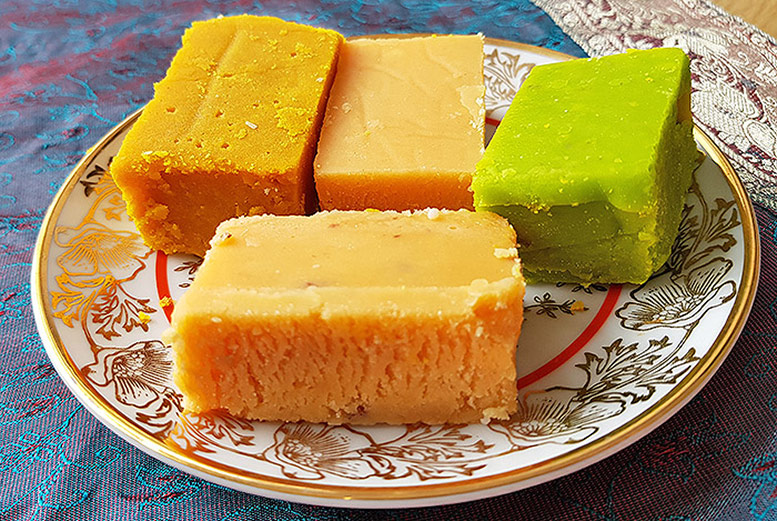
Indian Sweets: 10 of the Best Types of Mithai You Have to Try
When going for a meal in an Indian restaurant, you may have spotted Gulab Jamun on the dessert menu, but step into a mithai shop and you will be amazed to see you are stepping into a whole new world of luxury dessert sweets that perhaps you were unaware of beforehand!
When enjoying delicious treats such as mithai, there are other important things that you may be unaware of, in terms of health maintenance. Yes, you would not believe but these sweets can also have many effects on your physical health. That is why you must know how you can maintain your health by using one of the best TDEE calc by calculator-online.net.
As the sweets industry is expanding, its competition is also increasing; there are many players in the market today. Competing with them requires a competitive advantage; hence, you can plan a new packaging design, and to do that professionally, you can trust a sweet packaging design agency. They will ensure you stay updated and create a strong positioning in the market to stay ahead in the league.
When it comes to indulging in the finest mithai, one can't help but appreciate the role of modern technology in delivering a truly exceptional experience. Among the vast array of delectable options, there is one mithai that stands out as the epitome of perfection - the creamy and rich Gulab Jamun. Made with utmost precision and finesse, this traditional Indian dessert captures the essence of luxury and satisfaction.
With the aid of restaurant software management, renowned sweet shops can seamlessly manage their production, inventory, and sales processes, ensuring that each bite of Gulab Jamun is consistently heavenly. From its velvety texture to the irresistible sweetness that dissolves on the tongue, this mithai is a testament to the harmonious blend of tradition and technological efficiency that restaurant software management brings to the world of confectionery.
When choosing mithai, you will most definitely be spoilt for choice so we have put together a review of the ten most popular Indian sweets that are certainly not to be missed out on. If you love sweet treats, then you are going to love mithai...
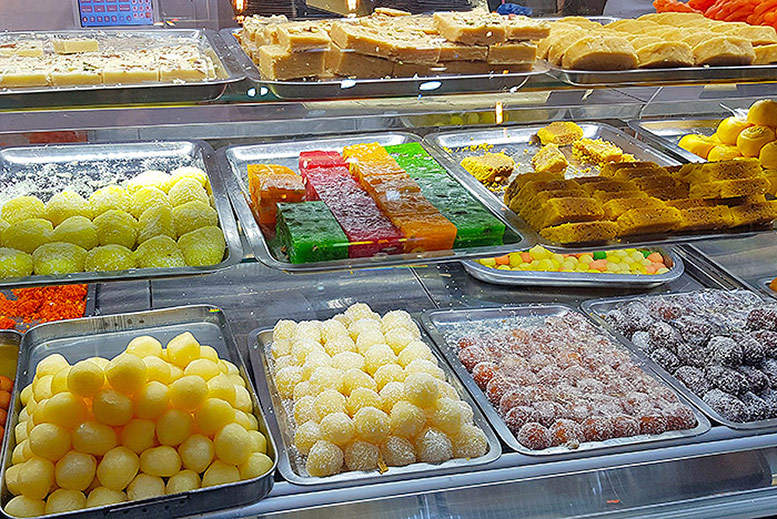
What is Mithai?
Mithai is the Hindi/Urdu word for sweets that are often made from flour, milk, sugar, nuts and even in some cases, vegetables and lentils that are then flavoured with rose water, saffron and cardamom.
Also known as Mishti in Bengali, mithai is popular throughout South Asia. Mithai can be eaten as a dessert, or served with afternoon tea and is traditionally handed out at weddings and to celebrate happy occasions such as births and at house-warming parties. Mithai is an important part of South Asian food culture and can be enjoyed throughout the Indian subcontinent with different regional variations.
Gulab Jamun
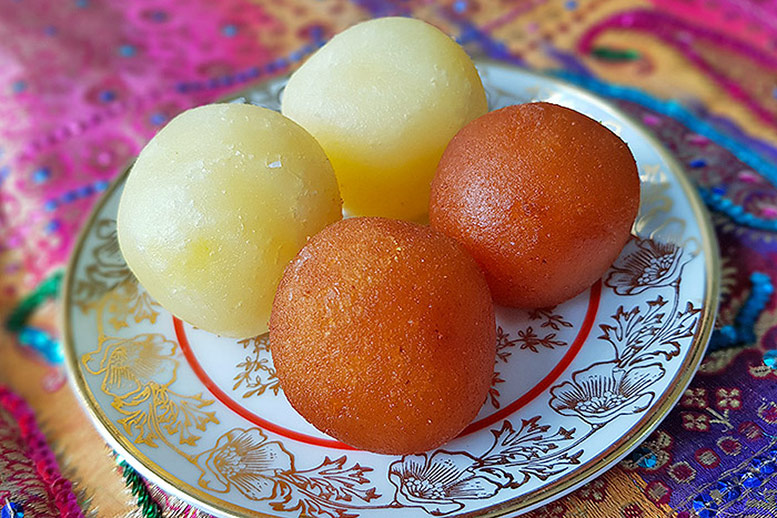
Literally translated from Hindi/Urdu as Rose Berry (or plum-like fruit), the Gulab Jamun is one of the most popular sweets throughout the Indian subcontinent and beyond.
The origins of the Gulab Jamun go all the way back to medieval India, where this mithai was derived from the sweet dishes prepared in the kitchens of the Mughal emperors who had Persian and Central Asian Turkic heritage.
This delicious dessert is made with milk dough balls that have been deep-fried to a spongy perfection and then soaked in sugar syrup that has been flavoured with rose water. They can also be coated in desiccated coconut. Variations include:
Kala jamun which is deep-fried longer to give a darker appearance.
Cutlass jamun which is a sliced gulab jamun that has been dipped in desiccated coconut
Gulab jamun with cream which has been sliced lengthways down the middle and cream added.
Barfi
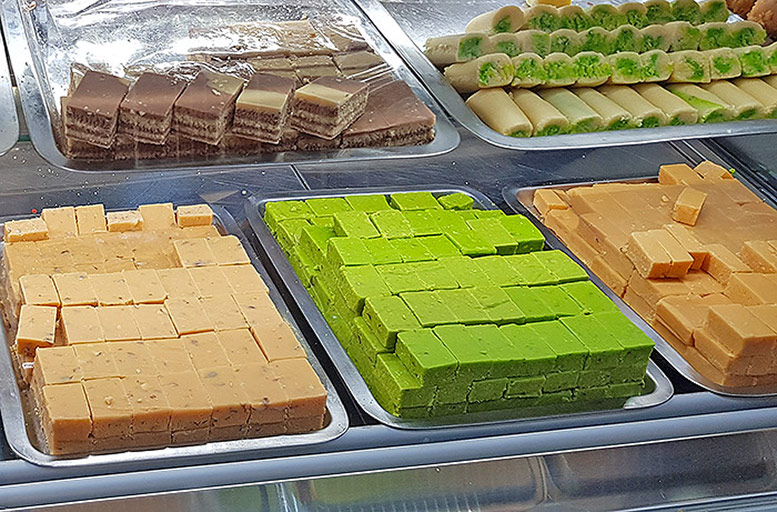
Barfi is a mithai enjoyed throughout South Asia however its name comes from the Persian word for snow or ice, as the plain barfi mithai is white. Made from condensed milk and sugar, it is normally served cut into blocks, similar to the luxury fudge you would find in the West.
Some of the most popular variations include:
Badam (almond) barfi looks similar to plain barfi, but it is flavoured with almonds.
Kaju (cashew nut) barfi which is brown and also known as Kaju Katli.
Besan (chickpea flour) barfi
Chocolate barfi which is a more modern variation of mithai, is normally layered with plain barfi.
Gajar (carrot) barfi which is often mistaken for gajar ka halva (but the fact that it is also cut into a block when served is a bit of a giveaway).
Pista (pistachio) barfi which is green.
Pista roll which is a roll of plain white barfi with a green pistachio barfi centre.
Laddu
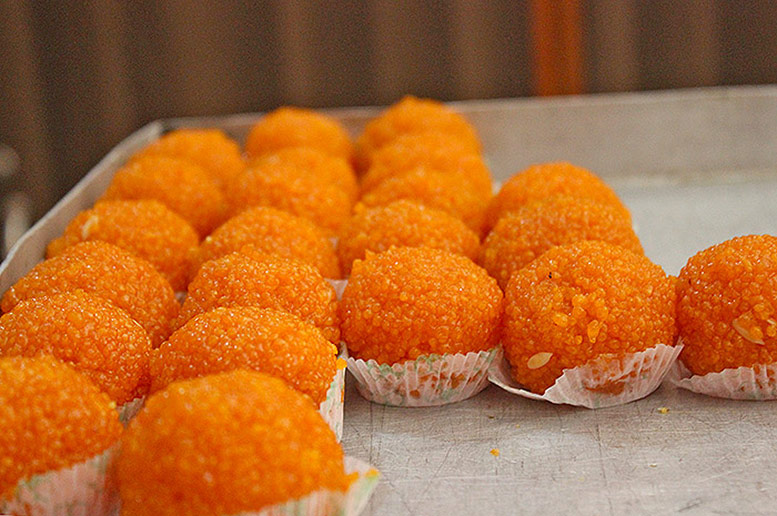
One of the most famous Indian sweets, this mithai is a round ball with regional variations, including the coconut nariyal laddu from the South of India and the motichoor laddu from the Eastern side of India, which borders Nepal.
The most famous laddu is, of course, the motichoor, made from tiny fried balls of besan (chickpea flour) that have been soaked in sugar syrup and rolled together into a larger ball, often with chopped nuts.
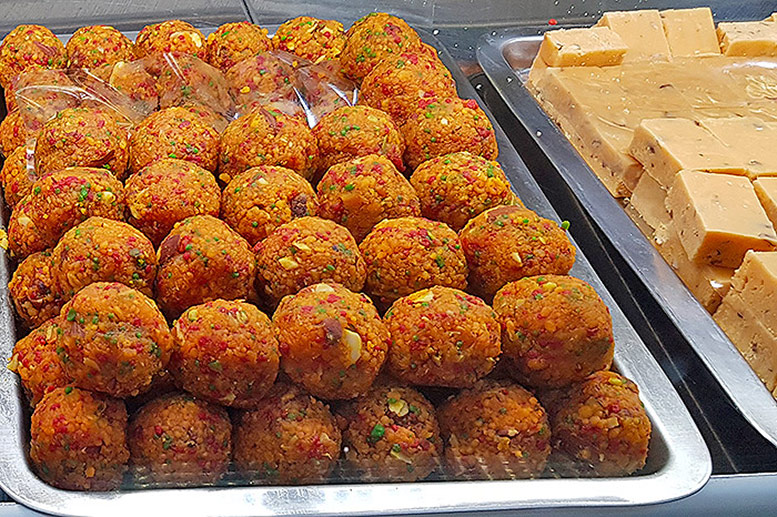
Laddu are so popular throughout India and Pakistan, that they are often the choice of mithai to be given out at celebrations such as births and weddings.
Balushahi
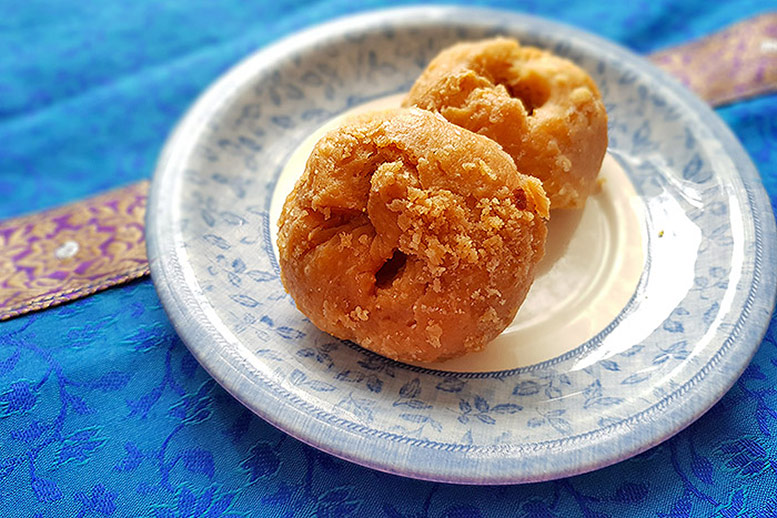
With its doughnut-like appearance, balushahi is a mithai with Northern Indian origins. Unlike many other sorts of mithai, the balushahi has a flaky, almost pastry-type texture and a similar version can also be found in South India, which is known as Badushah.
Balushahi are made by deep-frying stiff balls of dough, that are made from all-purpose flour and soaking them in sugar syrup.
Jalebi
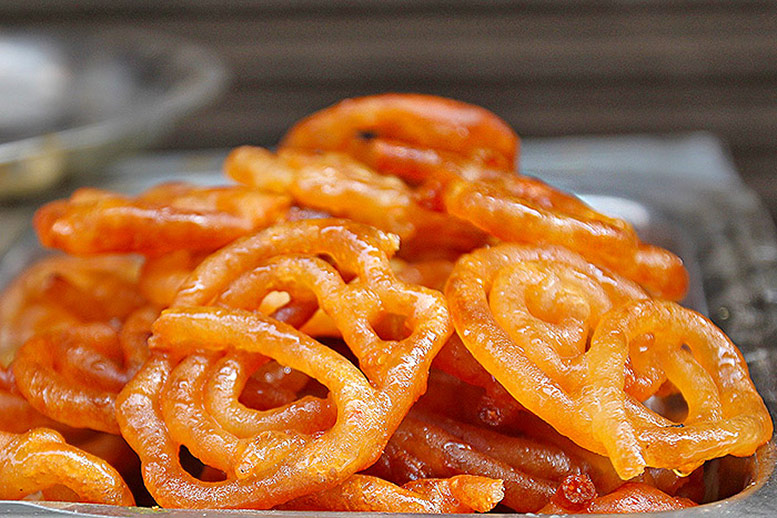
Along with the gulab jamun which took its inspiration from the sweet treats brought over to India by the Persian and Central Asian Turkic people to the Punjab, came the Jalebi. Made by pouring spirals of batter into hot oil and then soaking them in sugar syrup when fried, this sweet treat is enjoyed all over South Asia as well as the Middle East.
A jalebi is like a curly, crispy tube that holds the sugar syrup inside and can be enjoyed on its own or with milk.
Rasmalai
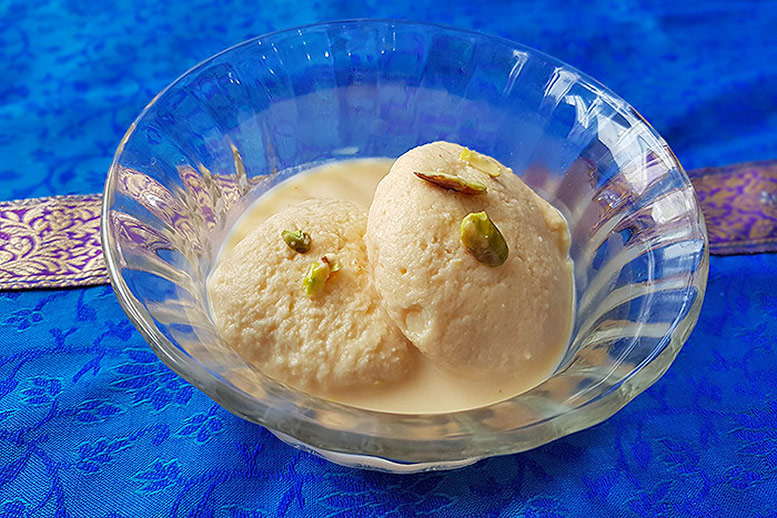
A delicious, milky dessert made by soaking flattened, spongy dumplings made with soft cheese, in sweetened, thickened milk that has been flavoured with green cardamom and pistachio.
Rasmalai originated in West Bengal and the name is a combination of two Urdu/Hindi words; Ras which means Juice and Malai which means cream.
Rasgulla
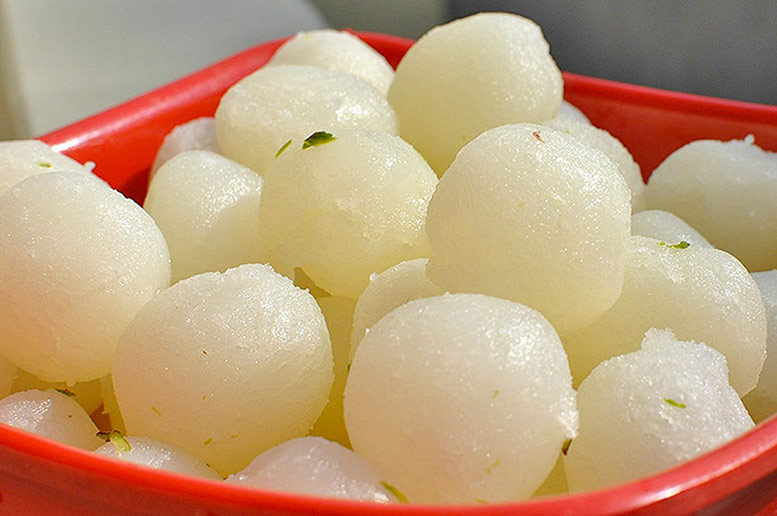
Similar to Rasmalai, this time the cheese dumplings, made from chenna, are rolled into a ball and soaked in sugar syrup, instead of milk.
This mithai also originates from the West Bengal and Odisha regions of East India. They are a white sweet that is deliciously light, spongy and flavoured with green cardamom.
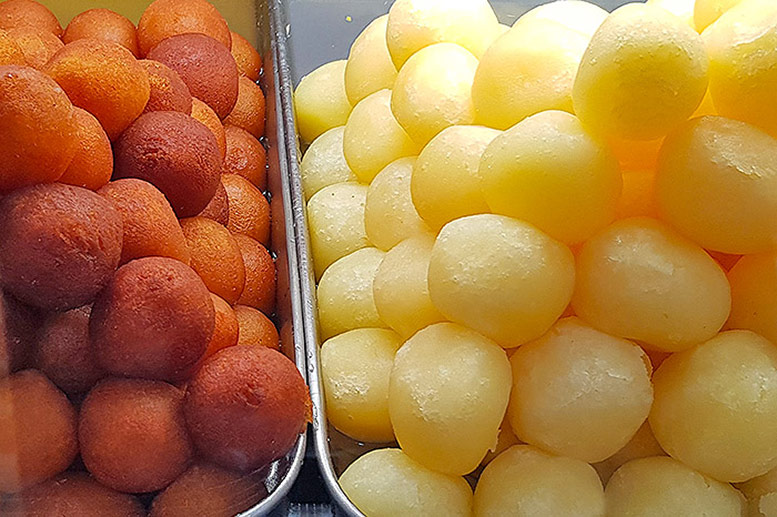
The name Rasgulla is derived from the two Hindi/Urdu words; Ras (juice) and Gulla (ball), and quite rightly, these juicy balls of intense sweetness can be enjoyed directly from the fridge on a hot summer's day.
Halwa
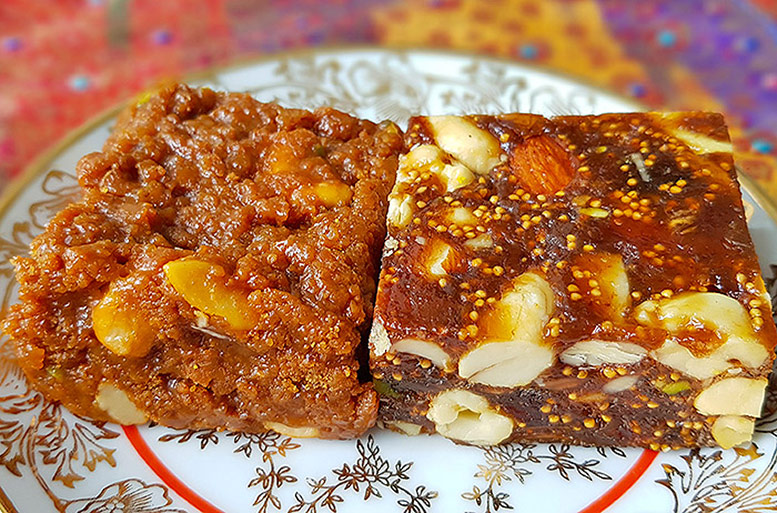
When it comes to mithai, halwa (or halva) is a whole separate topic! There is such a variety of these sweet desserts made from grated or mashed fruits, vegetables and even flour.
Halwa can be cut into bars depending on the texture and ingredients, or it can be served in a bowl, either hot or cold.
Enjoyed throughout many parts of the globe, some of the most popular halwa variations from South Asia include:
Gajar ka Halwa (Carrot) - Originating from the Punjab, in the winter there is nothing quite like a bowl of hot gajar halwa that has been flavoured with nuts and khoya (thickened buffalo cow milk).
Injeer (Fig) - A sticky block of mashed figs with chunky cashew nuts and almonds.
Sohan Halwa - Another solid halwa made with flour, and milk and has full cashew nuts added for an extra crunch. Sohan halwa was said to have been introduced in the Multan region of Pakistan however its origins likely date back further to historical Persia.
Muscat Halwa - Originating from the Tamilnadu region, Muscat Halwa is made with coconut milk and wheat. It is served in colourful bars with crushed nuts inside.
Kalakand
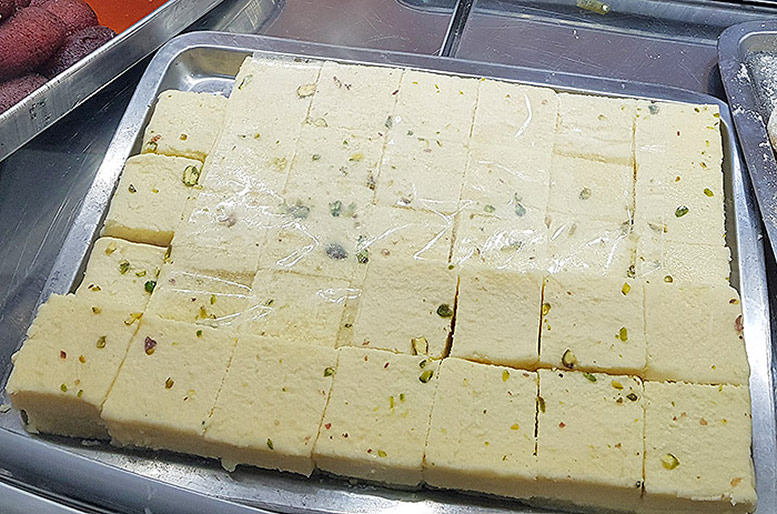
Hailing from Rajasthan, Kalakand is also known as milk cake and is somewhat like a milky version of barfi with a moister texture that melts in your mouth.
Made from solidified, sweetened milk, some might say that is an Indian form of cheesecake which has been topped with chopped pistachio nuts, instead of having a crumbly base like the cheesecakes of the West.
Nariyal Laddu
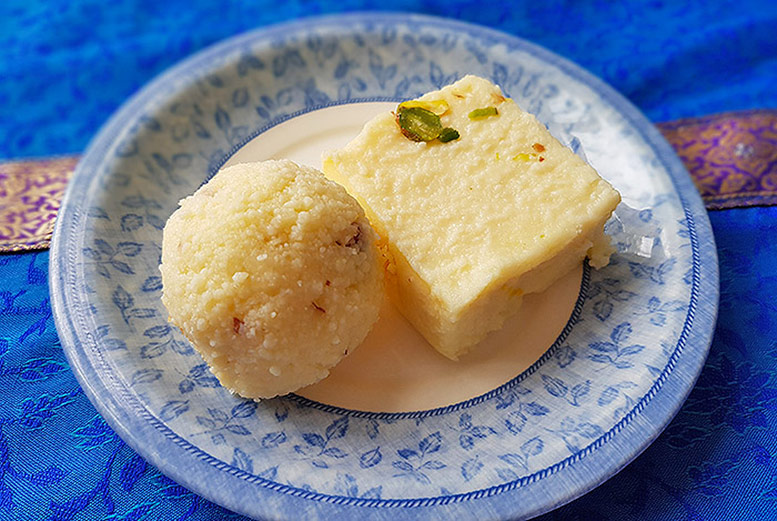
Another type of laddu, or ladoo, but this time with a South Indian variation, the Nariyal laddu is made from freshly grated coconut, milk and sugar and flavoured with cardamom and crushed nuts.
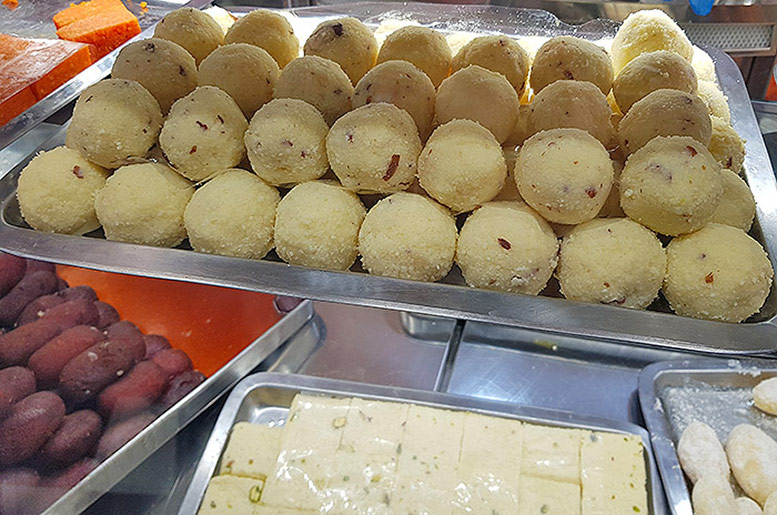
As with most mithai, the coconut ladoo is often made for festivals, religious ceremonies and happy occasions and events or just to serve alongside tea with friends and family.
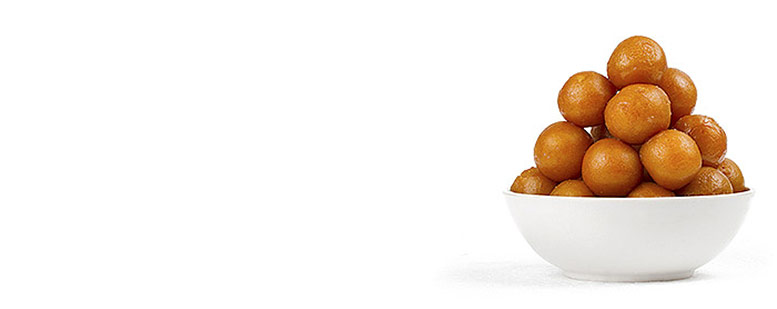

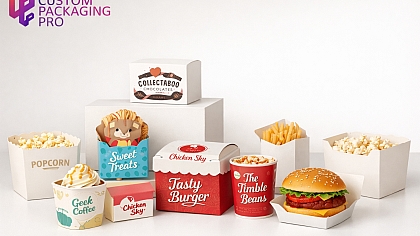
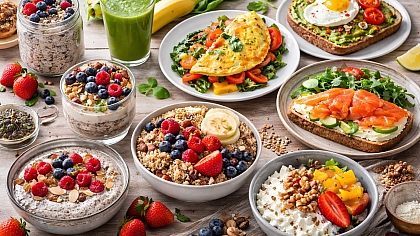
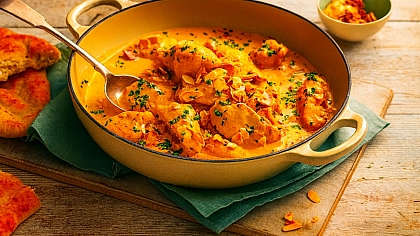
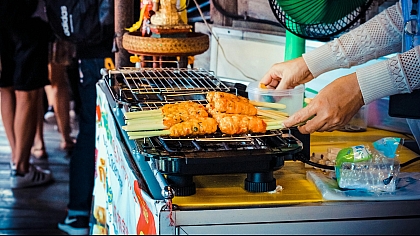
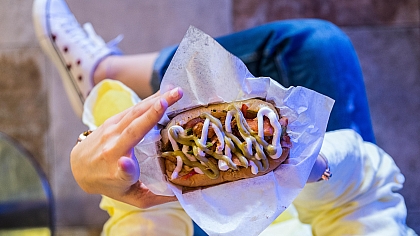
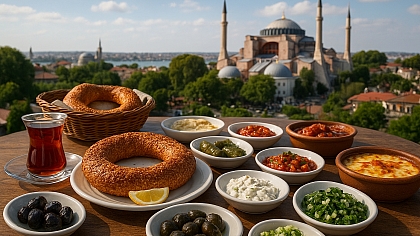
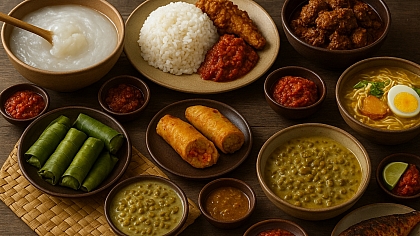
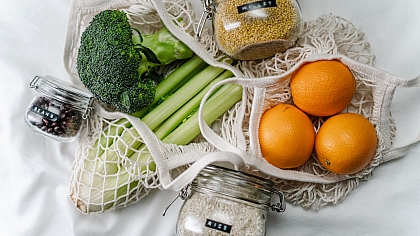
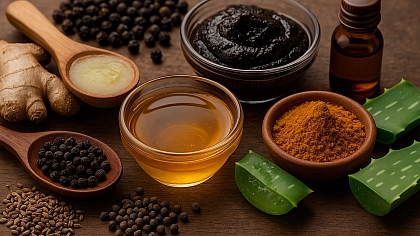
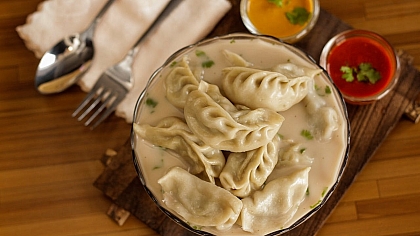
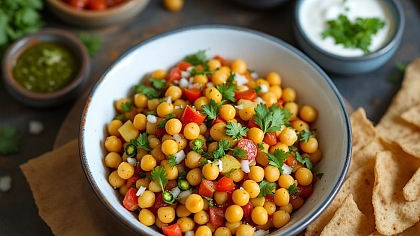
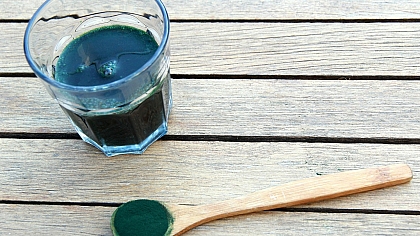
COMMENTS
This article has lots of descriptive words and the names of the mithai, my favourite one is the gajar ka halva.
wow looks tasty i am so hungry
I have come back to this after almost a whole year and it gets better and better. I would request that you include falooda next time as it is one of my favourites and I am aware that it is not a mithai but it’s one of my favourite Indian sweets
Omgyas! Okay falooda is amazing!!! But please include Kaju Katli!! Omg it tastes soooo good!
Nice and Yummy
That's nice article on Indian sweets. Yum and mouth watering!
Oh, the mithai magic!
Absolutely *ladoo-cious* article! I started reading and rolled away like a besan ball on a hot tawa, couldn’t stop! I told my wife, “These ladoos are *spherical treasures*… just like my belly after Diwali!” She wasn’t impressed and now I'm on a strict diet